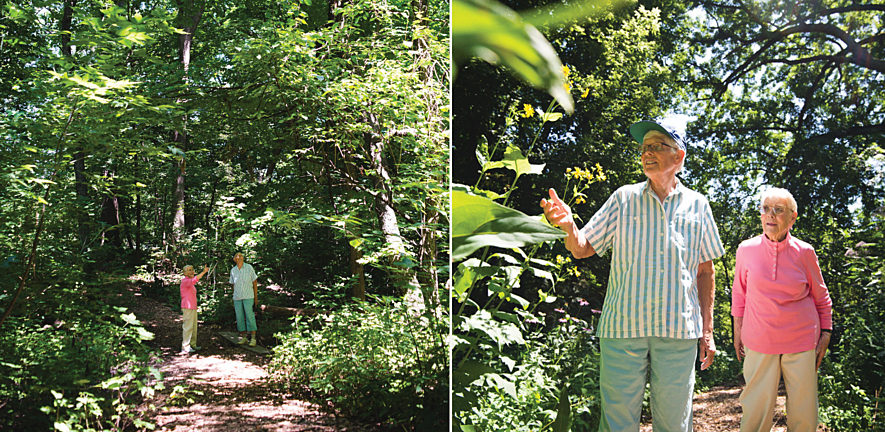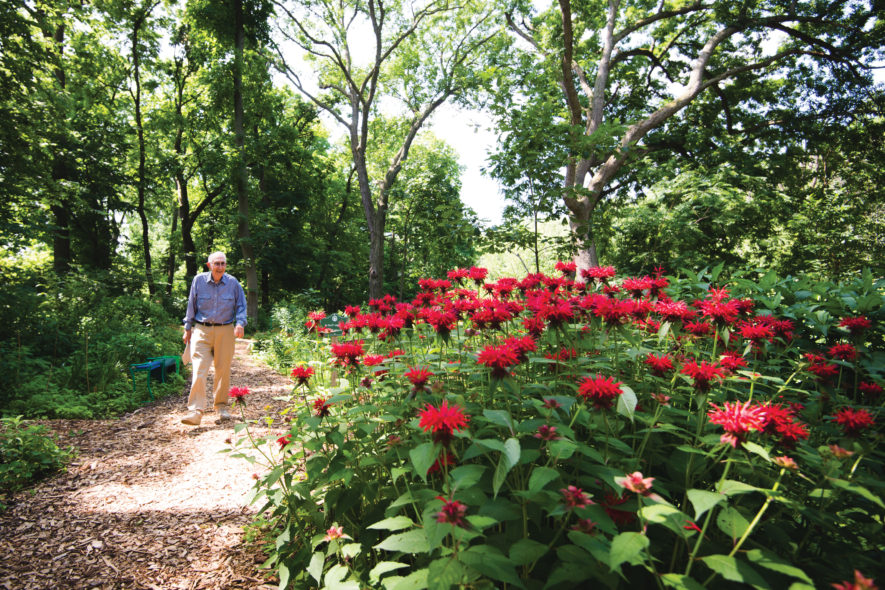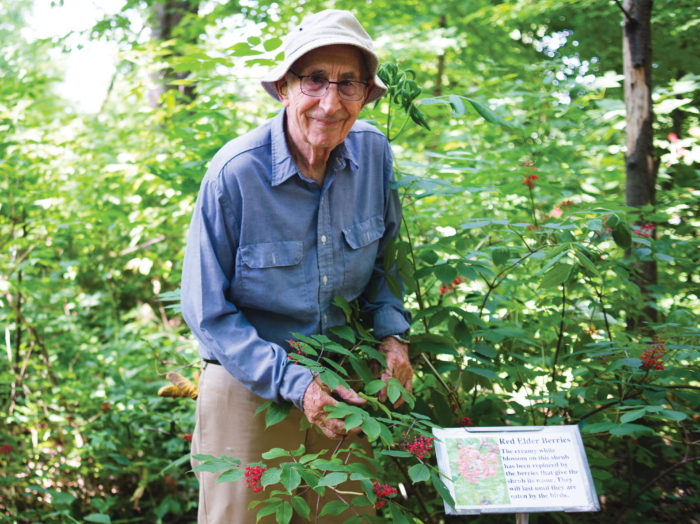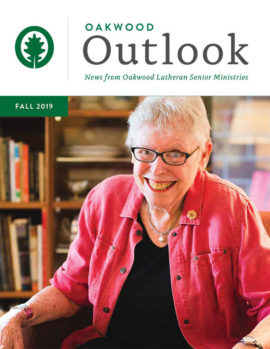Restoring A Treasure
Ask residents of Oakwood Village University Woods what they appreciate most about their community, and you’ll hear some common themes — The continuum of care and services. It’s location and longevity in Madison. The well-known Center for Arts and Education.
But one aspect of the campus that truly makes University Woods unique is the Oakwood Nature Preserve. The lushly-wooded nine-acre Nature Preserve is located on the west side of the campus between The Oaks building and Otto’s Restaurant. Although the Oakwood community was established in 1948, records of the land go back to 1835. At that time the area was mostly native prairie, punctuated by the occasional oak tree. This ecosystem was maintained by the fires that periodically swept through the area, killing all the tree seedlings except those of the fire-resistant oaks. After the area was farmed and the local fires suppressed, the area became home to a wide variety of trees. It is home to many birds, mammals and amphibians, and has been made more accessible to residents and the public with the addition of walking paths throughout.
Bob Greenler, a resident of The Oaks since 2002, has been involved with the Nature Preserve since moving to Oakwood. He believes strongly that the preserve sets Oakwood apart. “If you want to identify something that makes Oakwood stand out among other retirement communities, you have to put the nature preserve at the top of the list.”
He says that one of the earliest parts of a management plan for the Preserve was to deal with the presence of a dense stand of invasive trees in the northwest corner of the preserve that was brought to this country from northern Europe. The Norway maple is widely planted along city streets, but when it moved into the Nature preserve it formed a heavy shade that was slowly crowding out all of the native trees and plants. The decision was made to cut down a few of the trees each year, and as the cut-down area received enough sunlight, to restore some of the area to the prairie that had once been there.
A number of prairie plants that were planted in the cleared land were quickly engulfed by the chest-high mixture of non-native plants that moved into the sunlit space. It was very difficult for volunteers to identify the small prairie plants amongst the tall overgrowth and many of the prairie plants were lost.
Four years ago, Bob came up with a new plan to help grow the prairie. He recruited a number of people who formed a group called the Prairie Caretakers. They cleared the land of all brush and plants and divided it up into smaller plots. Each volunteer picked a plot for which they would be responsible. A total of 400 plants comprising 41 different species of prairie plants were ordered for a spring planting. Each volunteer was given a scale drawing of the plot showing the location for each plant, and was instructed to mark the plant by a stake on one side and a label identifying the plant on the other. The volunteers’ job for the coming year was to remove any plant that was not marked by a stake and a label. The volunteers may not have started out being able to identify prairie plants from others, but by the end of the season they were learning. The Prairie Caretakers continued honing their skills over the next few years by sharing their answers to the “is this a prairie plant or weed?” question with the others. After the first year, new plants started to appear from self-seeding and root propagation.
“These small prairie plots gave me a chance to continue my involvement, but I was able to scale down to a more manageable piece of land relative to what I used to be part of.”
In the following years new plots were cleared and new caretakers recruited. Bob says that they’ve now reached the planned extent of the restored prairie, and the Prairie Caretakers continue to plant, weed, label, and learn together.
Dave and Gretchen Pearson, who became involved as Prairie Caretakers before moving in to Oakwood earlier this year, were excited to be a part of the project. “We fell in love with Oakwood before we even decided to live here,” shares Gretchen. “The best part about living here is the preserve and all the beautiful plantings throughout the campus.”
Marv Beatty, Oakwood resident since 2015 and a Prairie Caretaker, says “One of the things that I enjoy about this project is the opportunity to learn how to identify more prairie flowers.” After his retirement from UW-Madison as a Professor of Soil Science, Marv began volunteering with the Dane County Parks department. He was involved with planting prairies, removing invasive weeds, periodic prairie burning, and collecting and processing the seeds so the process could be repeated.

“These small prairie plots gave me a chance to continue my involvement, but I was able to scale down to a more manageable piece of land relative to what I used to be part of,” said Marv.
Although the Caretakers are learning through their involvement with the Oakwood Nature Preserve, some caretakers — like Marv — had some background in working with planting or restoring prairies. Glenn Chambliss and Diane Derouen moved to Oakwood in 2018, but still own property where they are working to restore nearly 50 acres of prairie. As a nature photographer, Glenn takes a special interest in the outdoors in general, but especially the wildlife that uses the preserve and the prairie as their habitat. “I enjoy this work because it provides habitat for lots of creatures — birds, bees, lizards, and all kinds of other things.”
The Prairie Caretakers try to get together once a week in summertime for an “unofficial” working event and for the past two years they have hosted an annual “Open House on the Prairie” event to celebrate their work and show off the prairie to residents and staff. The prairie continues to become more beautiful each year. Bob claims that the expertise and dedication of the Caretakers ensures that the prairie will continue to prosper in the coming years.
The Nature Preserve has been evolving for generations. While each Prairie Caretaker has a different background and involvement with the preserve, all agree the Nature Preserve is a treasure.
The Prairie Caretakers are looking for additional volunteers to help with the prairie plots. Interested? Contact Bob Greenler at (608) 230-3014.


